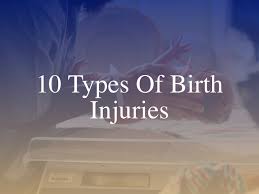Welcoming a new baby into the world is often a joyous occasion, but in some cases, complications during childbirth can lead to birth injuries. These injuries range in severity and type, affecting newborns and their families. Understanding the different types of birth injuries can help parents identify symptoms early and seek the right care. If you suspect that a birth injury may have been caused by negligence, consult with birth attorneys for guidance.
Common Types of Birth Injuries
1. Brachial Plexus Injury
The brachial plexus is a network of nerves that sends signals from the spine to the shoulder, arm, and hand. A common birth-related issue is Erb’s Palsy, which occurs when these nerves are stretched or torn during delivery. This can cause weakness or paralysis in the affected arm, with symptoms ranging from mild to severe. While many infants recover fully with physical therapy, some may require surgery for nerve repair.
2. Cerebral Palsy
Cerebral Palsy (CP) is a group of disorders affecting a person’s ability to move and maintain balance and posture. It can occur due to brain damage during fetal development, birth, or shortly after. Hypoxia, or lack of oxygen, is a significant risk factor during delivery. Symptoms vary widely, from mild motor skill impairments to severe physical disabilities. Early diagnosis and intervention with physical, occupational, and speech therapies can improve outcomes significantly.
3. Bone Fractures
Fractures may occur during complicated deliveries, especially with large babies or difficult positions. The most common fracture during birth is a broken clavicle or collarbone. Symptoms include a lack of movement in one arm or a noticeable lump on the collarbone. Fortunately, newborn bones heal quickly, and most fractures resolve with immobilization and gentle care.
4. Facial Nerve Injuries
Facial nerve injuries can result from pressure on the baby’s face during delivery. This may happen with forceps-assisted births. Symptoms include drooping of the mouth or an inability to close the eye on the affected side. Most facial nerve injuries are temporary and heal within a few weeks.
5. Caput Succedaneum and Cephalohematoma
These conditions involve swelling and bleeding under the scalp. Caput succedaneum is swelling caused by pressure on the head during delivery, while cephalohematoma involves bleeding between the skull and the periosteum. Both conditions typically resolve independently; however, cephalohematoma may lead to complications such as jaundice if the blood is reabsorbed too quickly.
6. Intracranial Hemorrhage
Intracranial hemorrhage, or bleeding in the brain, can occur during a traumatic delivery. There are different types, such as subdural and intraventricular hemorrhages, each with varying severity. Symptoms may include seizures, lethargy, or abnormal breathing patterns. Immediate medical intervention is crucial, and treatments may include medication or surgery to manage the bleeding and prevent further damage.
Steps to Take If a Birth Injury Occurs
If you suspect your newborn has suffered a birth injury, it’s crucial to act quickly:
- Seek Immediate Medical Attention: Ensure your baby receives a thorough examination and appropriate treatment from healthcare professionals.
- Document Everything: Keep records of all medical reports, conversations with healthcare providers, and any symptoms observed in your baby. This documentation can be vital if pursuing legal action.
- Consult Specialists: Depending on the injury, consulting specialists such as neurologists, orthopedists, or pediatricians can provide insight into the best treatment options and prognosis.
- Consider Legal Advice: If you believe the injury resulted from medical negligence, consulting birth attorneys specializing in birth injury cases can help determine if you have a valid claim. Their expertise can provide valuable insights into your situation.
- Seek Support: Connect with support groups or counseling services to help you and your family cope with the emotional and physical challenges of a birth injury.
Conclusion
Birth injuries can be a daunting experience for any family; however, understanding the different types and their treatments is a crucial step toward ensuring the best possible outcome for your child. You can better manage the situation by seeking immediate medical attention, documenting all relevant information, consulting specialists, and considering legal advice when necessary. Remember, you’re not alone—support is available to help your family through this challenging time. Always advocate for your child’s health and well-being, and remain hopeful for their bright future.

